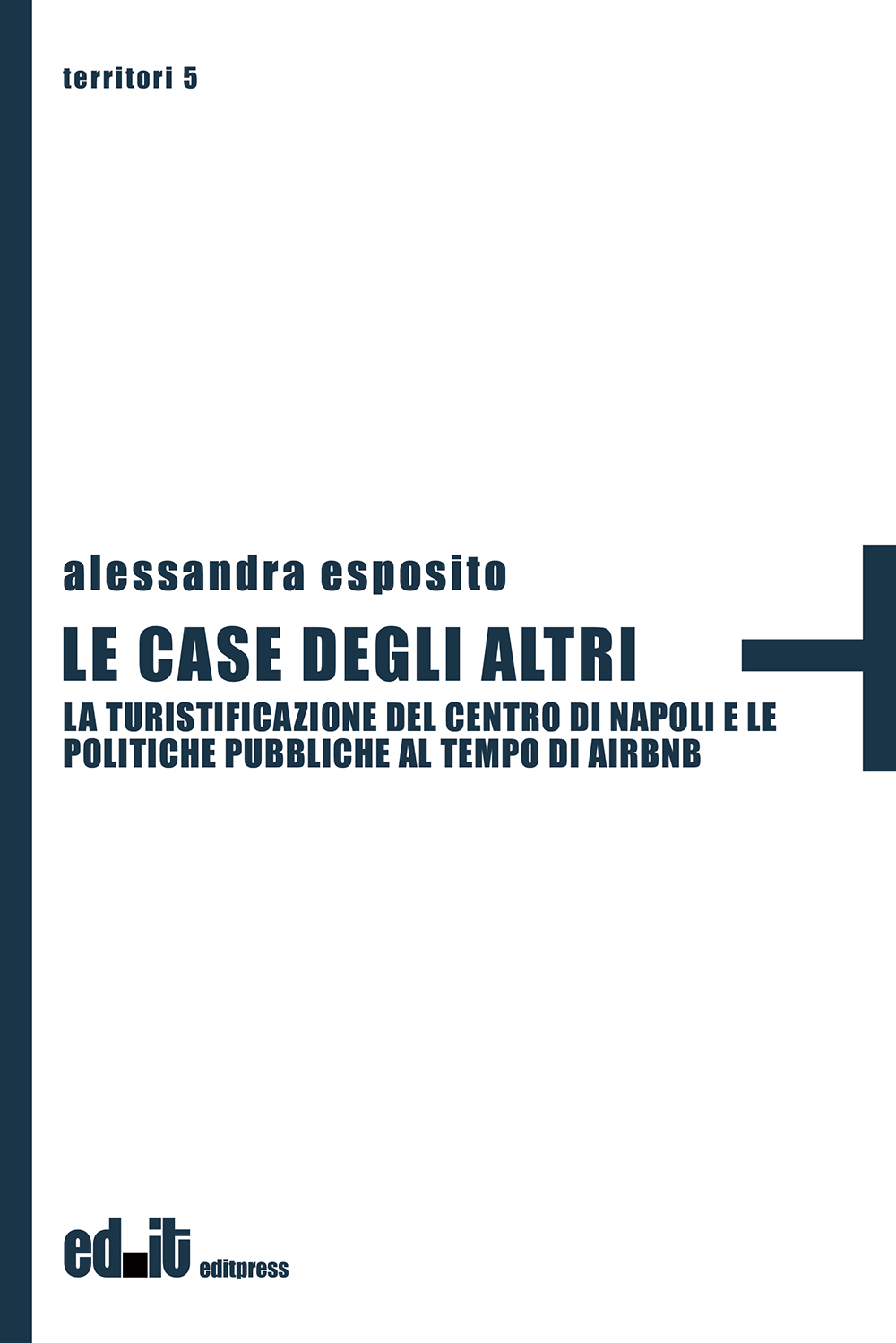Historically, Western cities have seen the forced displacement and expulsion of certain resident groups from parts of the urban fabric for various reasons, typically economic, ethnic, or religious. However, over the last fifteen years, a more pervasive phenomenon of exclusion from cities has emerged, rapidly impacting local economies and the structure of the resident population: that is, over-tourism. While spaces for foreign visitors have always been contemplated in popular art cities at least since the dawn of the Grand Tour age in the Eighteenth century, the expulsion of residents to make way for tourists, vacationers, and short-term travelers has worsened significantly in very recent times. This escalation is largely due to the widespread and somewhat uncontrolled proliferation of short-term rentals facilitated by digital booking platforms, most notably Airbnb, a company founded in San Francisco in 2008.
The book Le case degli altri. La turistificazione del centro di Napoli e le politiche pubbliche al tempo di AirBnB (The Houses of Others. The Touristification of Naples' City Center and Public Policies in the Age of AirBnB) starts with the premise that housing and gentrification driven by tourism are a political problem. It then develops this idea through compelling insights into the economic implications of these urban upheavals, the still-partial law regulations surrounding them, and their direct effects on the population of the urban areas most affected by over-tourism.
The book has three chapters. The first outlines the broader context, focusing on tourism and its effects in Southern European countries. The second chapter hones in on Naples, a Southern Italian city currently experiencing some of the fastest and most devastating impacts of the “Airbnb effect”. The third chapter examines the latest legislation concerning tourism, a branch of law that is still evolving.
The author, Alessandra Esposito, faces the topic of exclusion and expulsion of inhabitants from turistified cities from a multiplicity of points of view: first of all, she is originally from Naples, and is able to address the rapid dynamics that are changing the character of the residential heritage of the city from a very personal perspective. Then, she is an activist, and her effort in social causes is clear also in the critical cut she privileges for her book. And finally, she is a university researcher at the University of Roma La Sapienza, with a PhD in Engineering for Architecture and Urban Planning and a vast curriculum of publications on evictions, migrations, and tourism-driven displacement, and the effects of these three phenomena on housing, economic evolution, and urban changes.
The second chapter on the case study of Naples proves essential for understanding the hasty and potentially irreversible consequences of over-tourism on city center’s urban fabric and the social composition of its inhabitants. This section also represents the most original and, in some ways, surprising part of the entire book: through a deep examination of the over-tourism phenomenon and many meticulous maps and diagrams, Esposito is able to unveil the effects not only on the city’s economy and change in the built environment, but also the process of rapid physical exclusion of the most vulnerable segments of the population.
Low-income residents, renting in the historic center of Naples, seem to be the primary and undefended victims of over-tourism. Through very telling maps, Esposito shows how it is possible to divide the city of Naples in two with an imaginary line running from Castel Sant’Elmo on the hill to Castel dell’Ovo along the shore, called by the author “polarization axis”. On the Eastern side lies the historic center of Naples, home to the most visited but also the poorest neighborhoods of the city. On the Western side of the line are the richest parts of Naples, where most owners of apartment buildings in the center actually live. Esposito demonstrates, in a compelling and highly visual manner, that the fragility of the historic center and its vulnerability to a rapacious management of its residential heritage are a direct consequence of these disproportions. Social injustices and the forced evictions of low-income tenants stem from landlords’ intentions to place their properties on the temporary tourism rental market.
Due to the rapid exclusion of large segments of its population from their original neighborhoods in favor of temporary lodging for tourists, Naples can be considered both a case study and a warning for many other cities. And yet, Esposito is not against tourists, but against a consumerist view of the city itself. As beautifully put by Augustin Cocola-Gant in a quote cited by Alessandra Esposito on page 25: «The issue of expelling or excluding local residents isn’t merely a consequence of tourism itself, but rather a result of real estate speculation, the liberalization of rentals, the lack of social housing, and insufficient regulation of the housing market. Tourism has amplified the exclusion that occurs when housing is primarily seen as an opportunity for profit».
Le case degli altri. La turistificazione del centro di Napoli e le politiche pubbliche al tempo di AirBnB
Alessandra Esposito
Editpress
Florence
2023
21 x 14 cm
200 pages
Italian
979-12-80675-27-9
All images: © Alessandra Esposito
